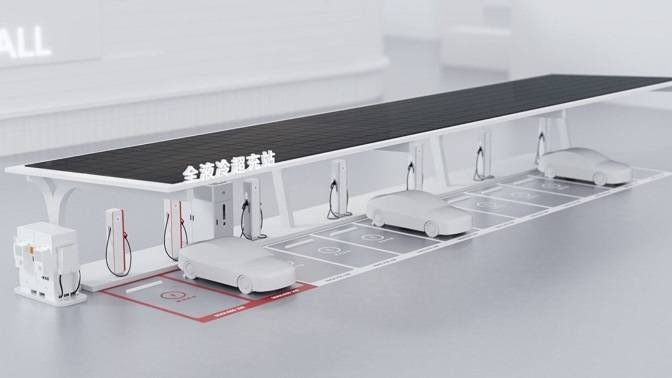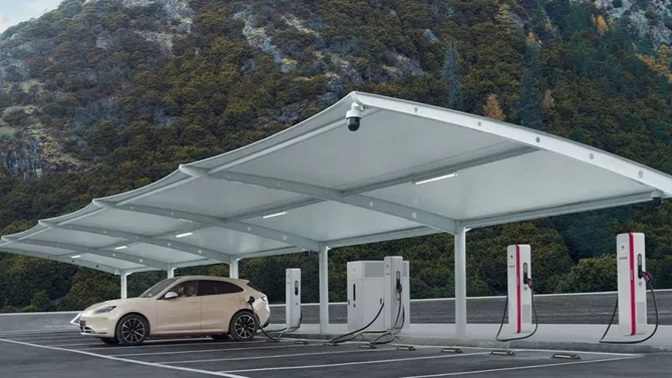Huawei’s ultra-fast charging system charges at one kilometer per second.
Public charging is one of the main obstacles to the widespread adoption of electric vehicles. The issue is that points moved slowly in the early generations. 50 kW at most, with further increases to 100 kW, 150 kW, and not much more. However, Huawei has shown that technology can provide several orders of magnitude more significant numbers with the introduction of its ultra-fast charging system.

It is a liquid-cooled charging system with a 600 kW maximum output power per point and a 600 A maximum current. That enables an automobile that can obtain these numbers to refuel at a rate of one km per second of autonomy.
That implies an electric vehicle can recover enough energy to drive 300 km in just 5 minutes. Something that would need charging periods to be quite similar to a combustion engine car’s refueling times.
According to Huawei, ultra-fast networks must be expanded to provide the most comprehensive service to an electric car fleet—which is expected to increase from the 18 million units sold globally last year to 180 million units in 2034.
Ultra-fast charging: a question of profitability, and profitability
Remarkably, Huawei claims that the operator’s profitability and return on investment increase with the wattage of the stations.
That is so that the station can sell more electricity since the increased power encourages more vehicle rotation.

For example, During the presentation, he explained how a station in the Chinese town of Futian replaced its outdated, low-power equipment with ultra-fast chargers, increasing the station’s power by ten times and its capital expenditure (CAPEX) by twenty percent. As a result, the ROI decreased from eight to three years.
Since these systems will enable operators to provide their clients with a far more comprehensive experience, promote sales of electric vehicles, and increase profitability, more and more will be encouraged to replace existing low-power equipment with considerably more competent models.
Additionally, Huawei believes unreliable and sluggish chargers are an expensive waste and a cause of annoyance for its clients. It is an unwise purchase that has to be changed.
Related Post
